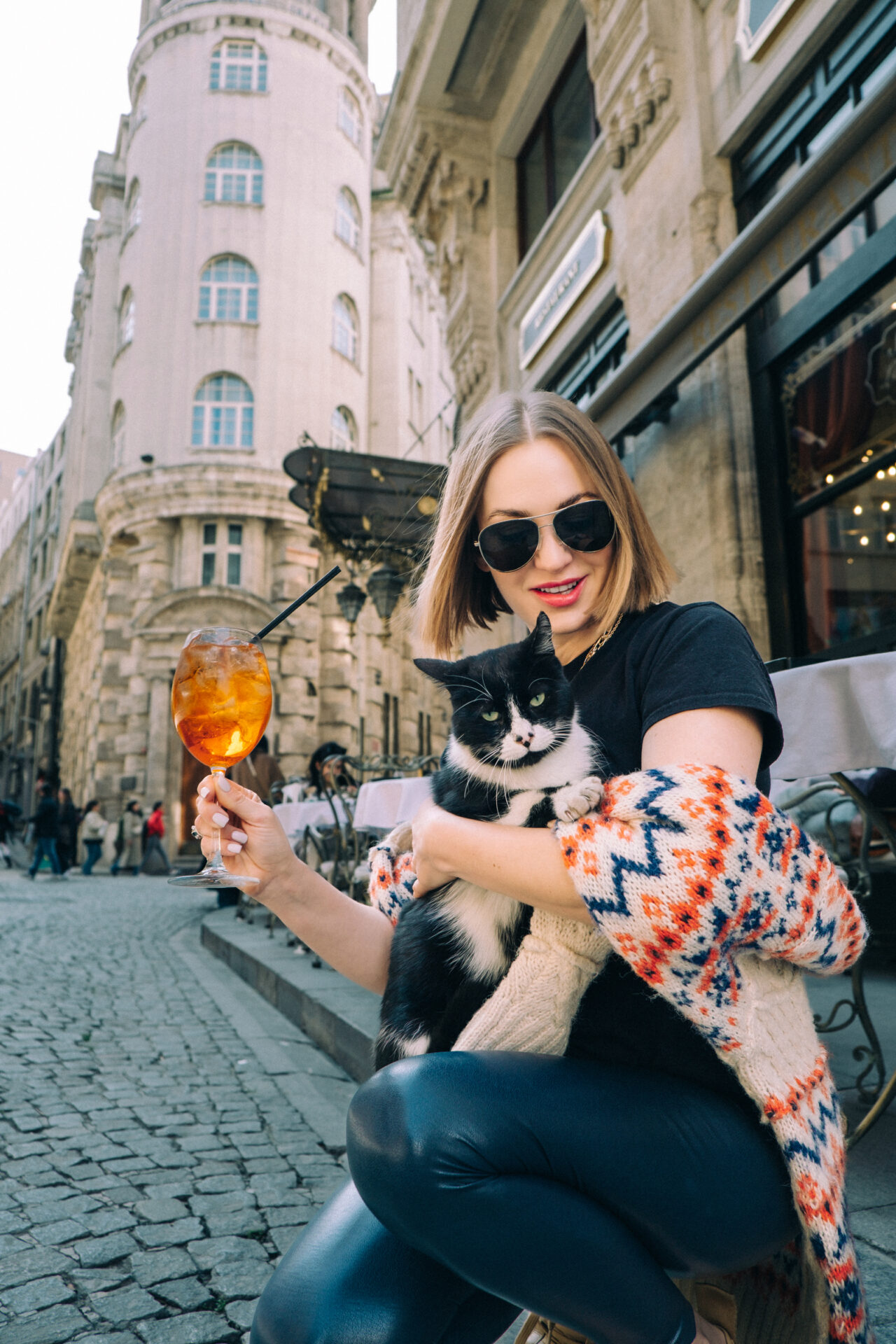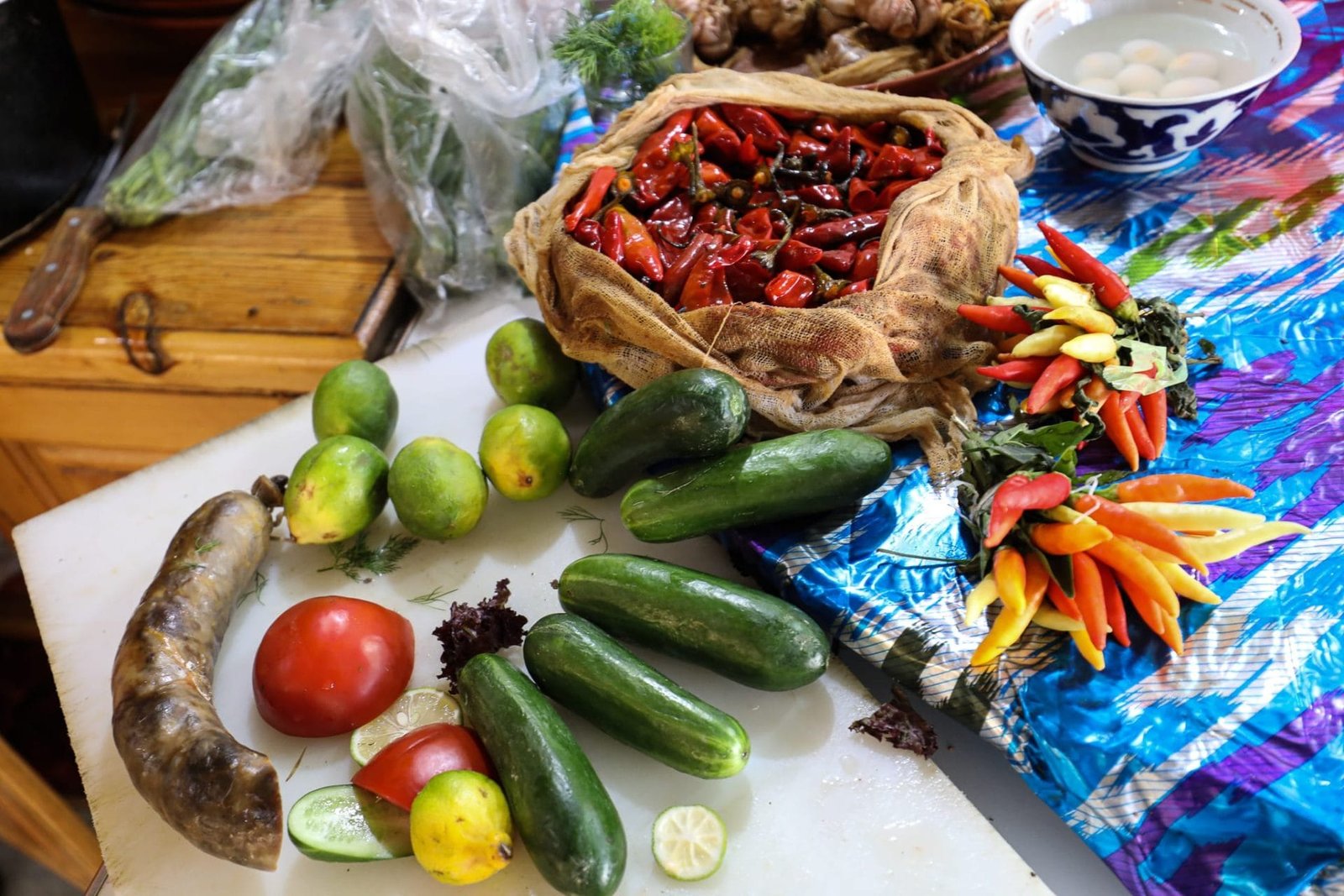
10 Delicious Foods Everyone Should Try in Uzbekistan
Famous Uzbek Dishes to try in Uzbekistan
Onions, cumin, pepper, and saffron are often featured in local recipes. Onion cakes, green tea, kabobs and pilaf are popular on Uzbek dinner tables. Meals are usually eaten at a low table or sat on the floor and eaten with the fingers. Bread accompanies most meals as grain farming is big all over the country.
Let’s take a closer look at some of the most famous dishes from Uzbekistan. At the end, local food is one of the best reasons to visit Uzbekistan!
Plov (Pilaf): A combination of rice, meat and vegetables
This meat and rice-based dish, known locally as plov, often features in festive dinners. You can get it from just about any Uzbek restaurant since it’s the country’s national dish. In fact, pilaf is a famous dish all over the world, although no two recipes are quite the same!
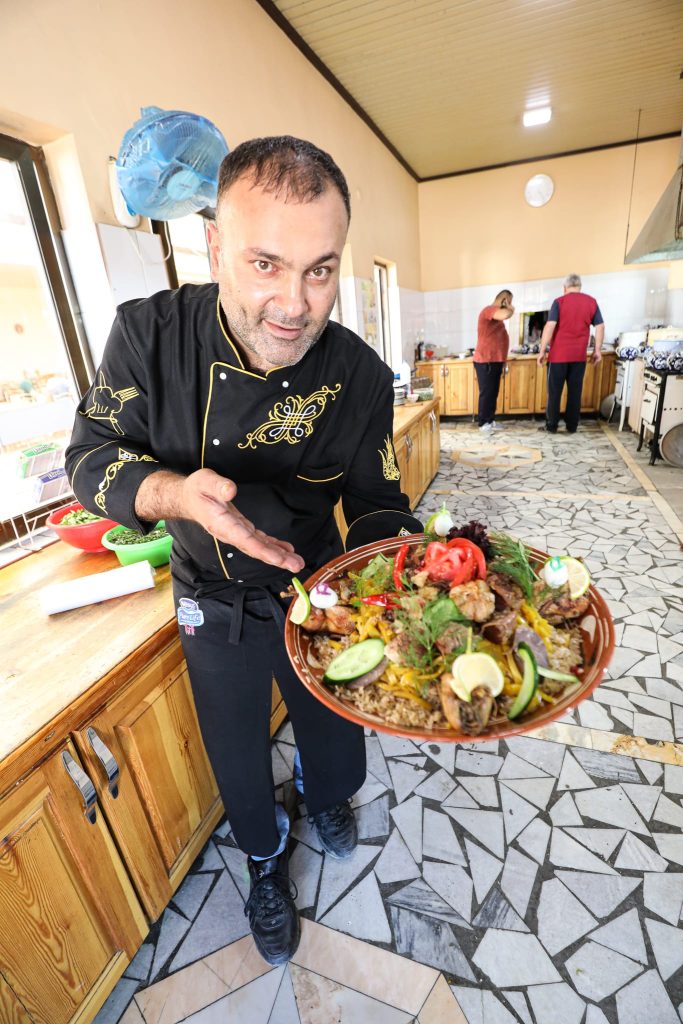
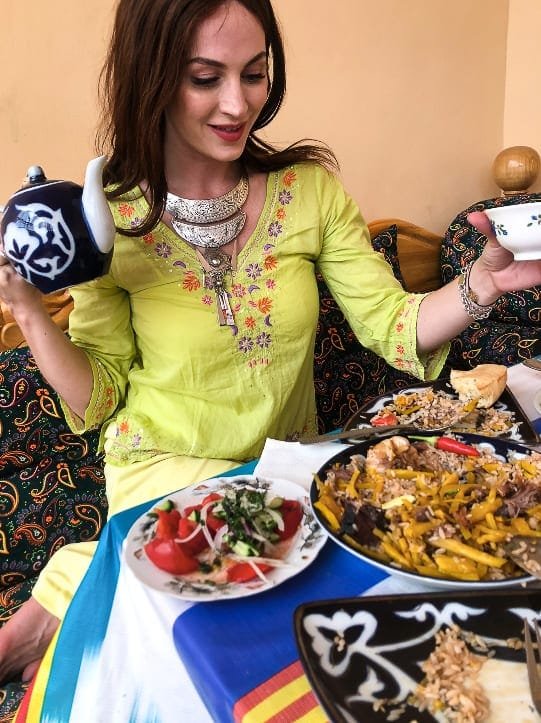
Rice is a typical pilaf ingredient but it can be swapped for pasta or wheat. Chickpeas (garbanzo beans) are a common addition, as is mutton, beef or chicken. Lamb is the traditional meat. You can replace it with another or even have more than one protein in there.
There are literally thousands of Uzbek pilaf recipes. In fact, the recipes vary so much there is not one ‘set’ way to make it. Every home cook seems to have their own recipe for plov. It’s a nutritious, tasty and well balanced dish which can be prepared with any grain, any meat and any vegetables to hand.
Head to Tashkent and go to a plov center where you can see huge cauldrons of this dish being prepared, sometimes enough to serve 1000 people!
Kabob: A marinated meaty treat served on a steel skewer
Kabob, or shashlik, is made from young lamb meat. It’s marinated in various spices and herbs and strung up on a skewer. Unusually, the most used marinade is water-based and not made with wine, vinegar or another flavor.
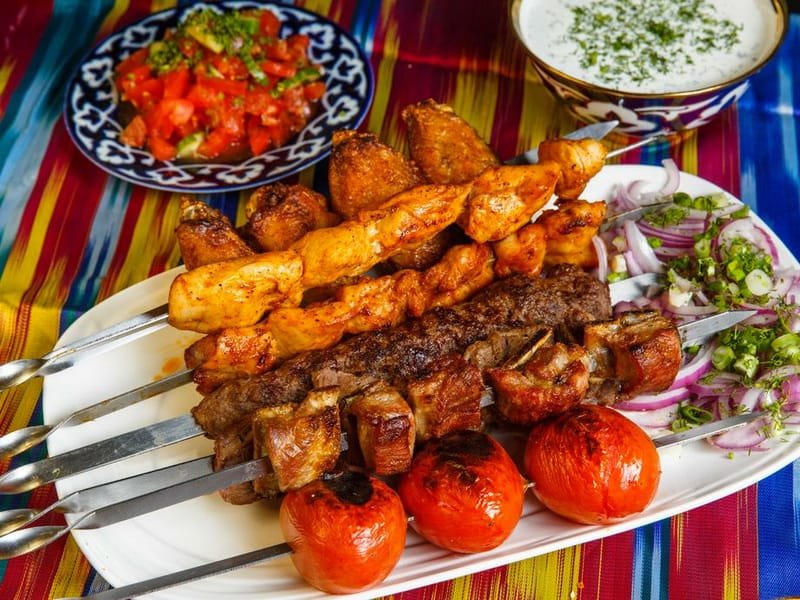
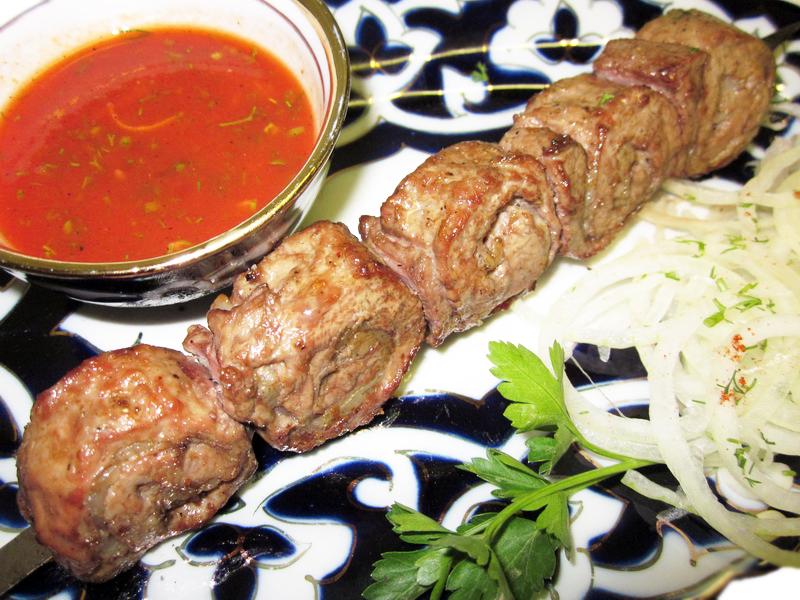
The water is flavored with spices, onion, apricot branches, grape fines, and cherry leaves. After marinating, the lamb meat is combined with mutton lard slices before being fried over the grill. Only men stand near the grill. Women are in charge of prepping and marinating.
There are various shashlik options including kiyma kabob which is ground meat, jigar kabob which is made with liver, and charvi kabob which is wrapped in a film of lard. Uzbek kabobs are usually served with pickled onions.
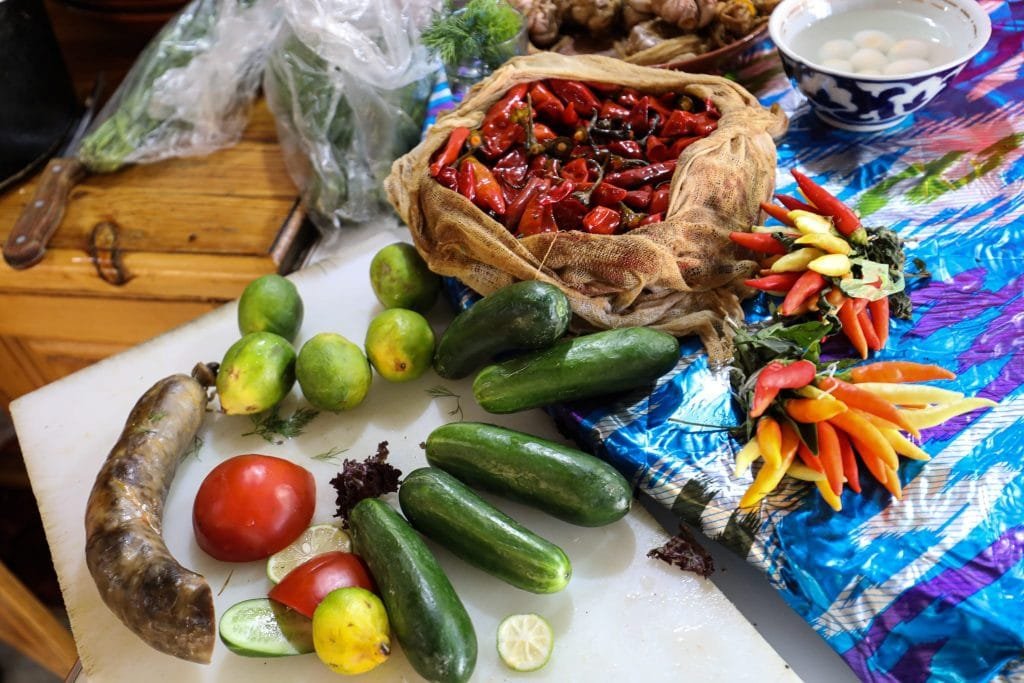
Lamb fat is used in the kabob whether it’s made with lamb, beef or another meat, which adds an amazing richness to the overall flavor. Pieces of meat and fat are threaded on to the skewers and then these tasty, meaty treats are cooked over the grill. They’re typically breaded too so you can expect a crunch on the outside of your kabob.
More Uzbek Barbecue Foods
Shashlik is only one example of what you might find on an Uzbek grill. Ribs, lamb tenderloin and other cuts of meat are popular grilled items. Chicken, fish, veal, and quail are also cooked on the grill, along with colorful vegetables.
Domlyama: A stew with meat and vegetables
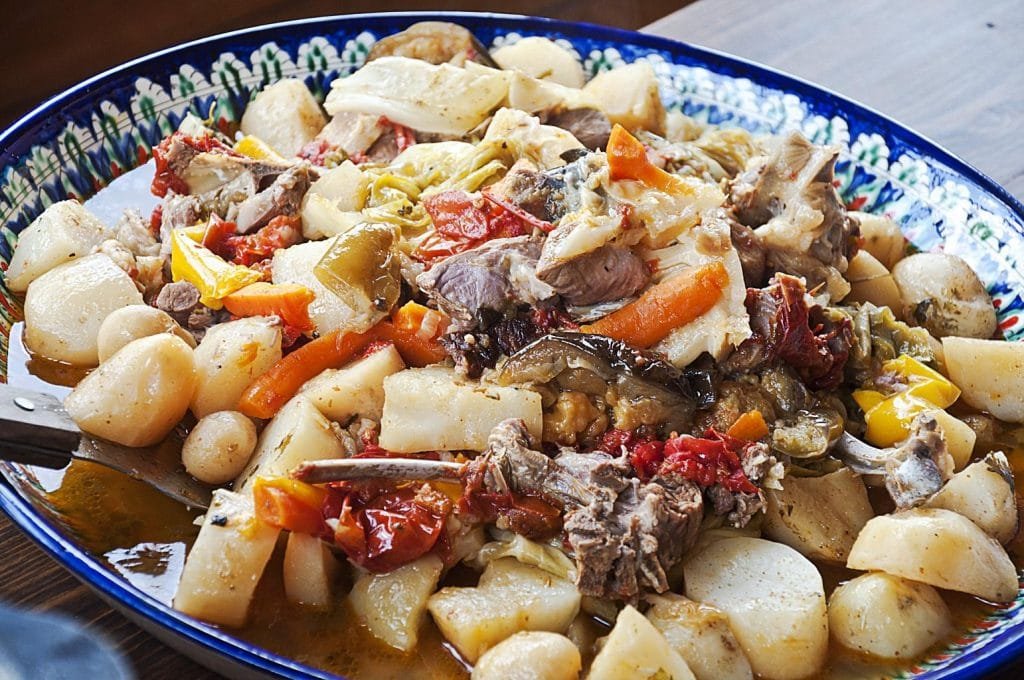
This meat and vegetable stew is made in a cauldron. Any meat can be used, as long as you fry it first to get a golden crust. The meat and different vegetables in domlyama are layered and either grape leaves or cabbage separate these layers.
Lagman: A meat and vegetable stew with noodles
This stew is made with lamb or beef, tomatoes, bell pepper, onions, carrots, and hand-pulled noodles. It’s thick and rich and delicately spiced. Noodles are very popular in Uzbek cooking and are added to many dishes. Hand-pulled noodles have a wonderful chewy consistency.
Hasib: Fresh lamb sausage
This lamb sausage is encased in intestine. It’s tasty and tender, and especially delicious served in a bowl of broth.
Manty: Lamb with vegetables in a steamed dough
This steamed dough encasing meat and vegetables is popular during the holidays. Many Uzbek households will keep manty in the freezer in case guests suddenly arrive.
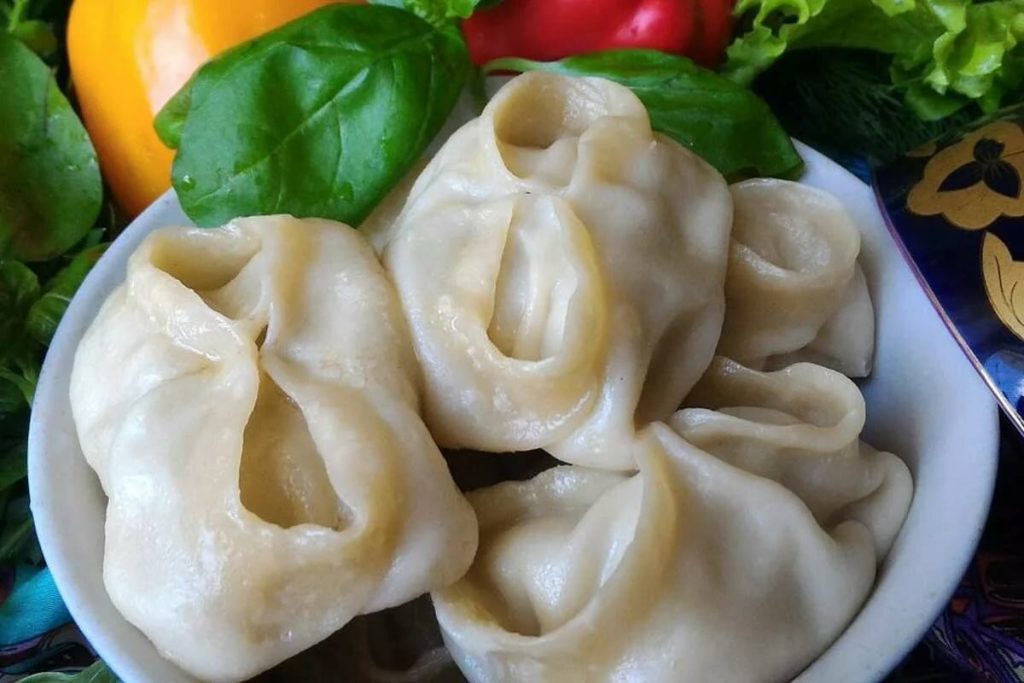
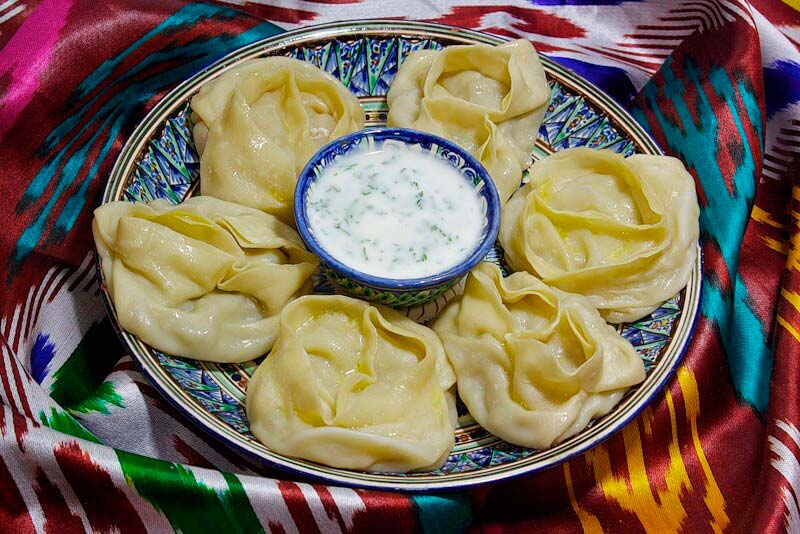
The classic manty recipe includes ground lamb meat, onion and fat. Beef tenderloin, potatoes and pumpkin might also feature. These large steam dumplings are served with a garlicky yogurt dressing, sour cream or perhaps some vinegar and a sprinkling of black pepper or hot chili powder.
Despite what Google may have you believing, Manti are not Russian! While it is true that there is a Central Asian version which is popular in Russia, calling them “Russian Manti” is actually a bit of a misnomer.
This mistake often happens because people think Manti must be related to their fellow Eastern European cousins Vareniki and Pelmeni. However, unlike the latter two, which usually have a sweet flavor or are stuffed with beef and lamb meat, Manti are a savory recipe prepared ahead of time and stored in the freezer for an easy meal later. So next time you come across someone claiming that Manti are Russian dishes, do your best to set the record straight – they might just thank you later!
Uzbek Breads: Patyr or Noni
Known as patyr or noni, traditional Uzbek bread is baked in round flat loaves with a decoration in the center. These are presented decorated side up at the table and then torn into pieces which are then piled on the bread platter.
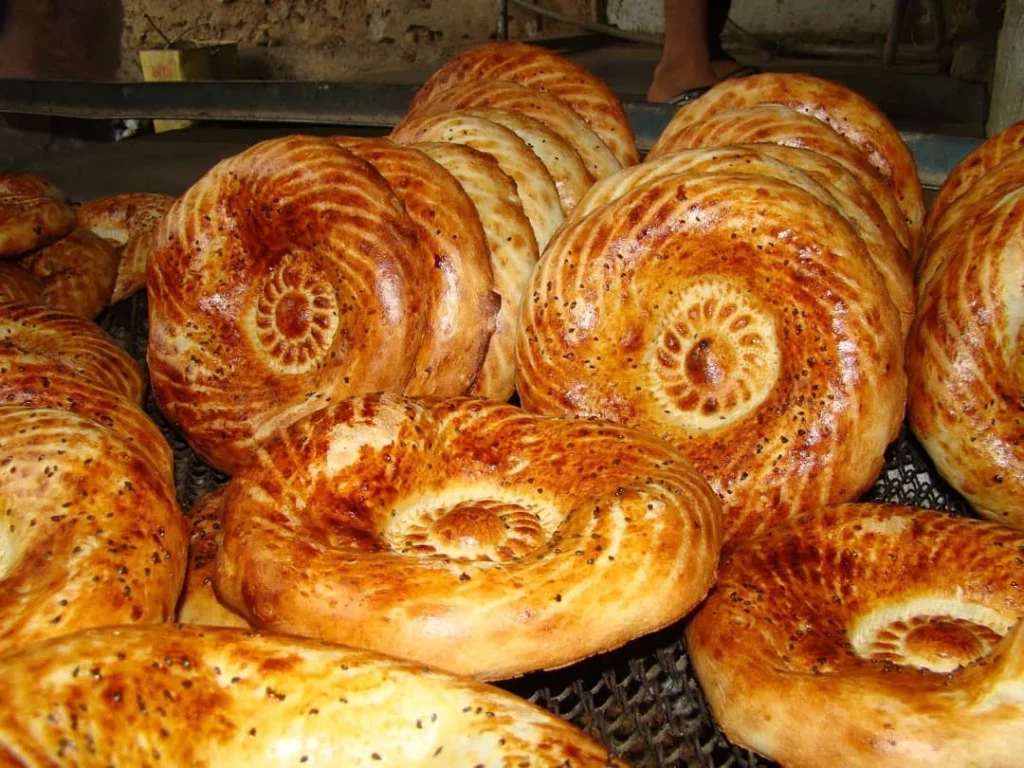
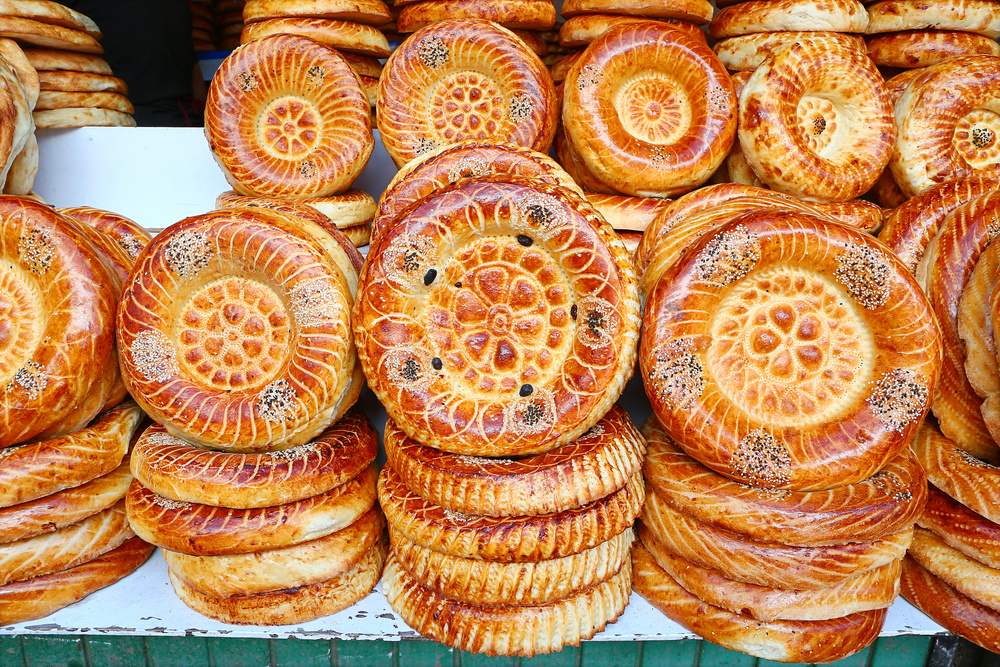
Obi non is the most traditional bread in this cuisine and it’s baked in a clay oven. In the Samarkand region, obi non is smaller and thicker. Bukhara obi non is sprinkled with Nigella seeds or poppy seeds.
Wedding patyr, in the Qashqadaryo and Andijon areas, is made with butter and cream. Jirish non is made from flour combined with wheat. Noni toki is a crispy flatbread cooked on the back of a wok so it comes out bowl-shaped.
Fried Fish in Garlic Sauce
Known as mai birion or mai birion ovi sir, this fried fish comes with a garlic and cilantro sauce and is a popular Friday night meal in the Jewish areas of the cuontry. Sometimes bread is fried and dipped in the garlic sauce. This is known as noni sir.
Samsa: Pies baked in a clay oven
These tandoor-baked pies are usually puff pastry triangles with lamb and onion. Any type of meat can be used for these or they might be made with vegetables only. The edges are crisp while the filling is juicy and soft.
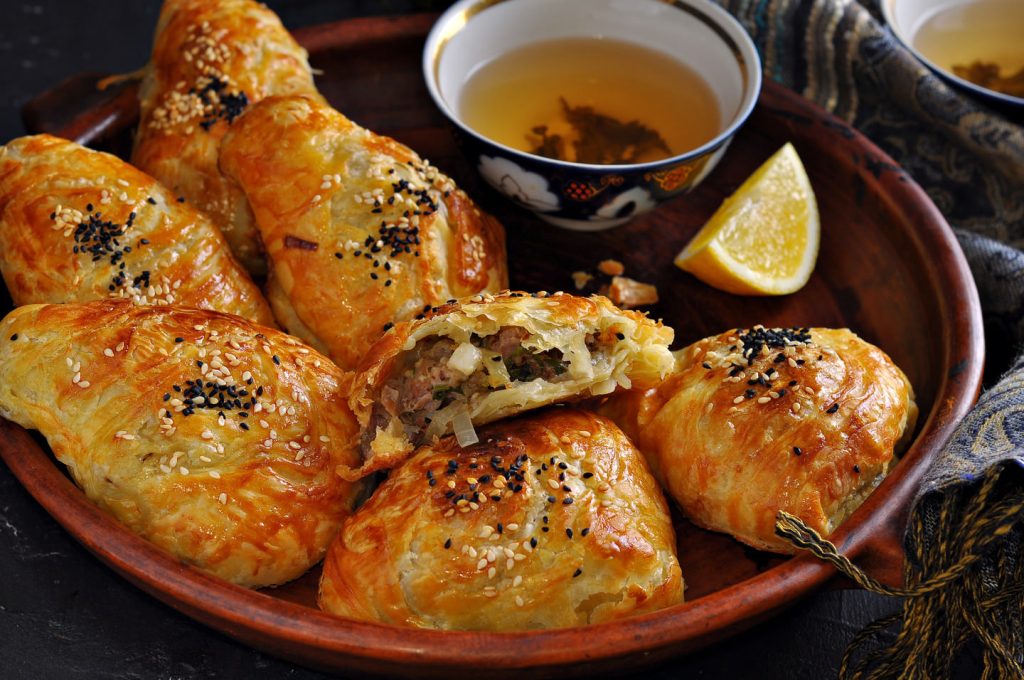
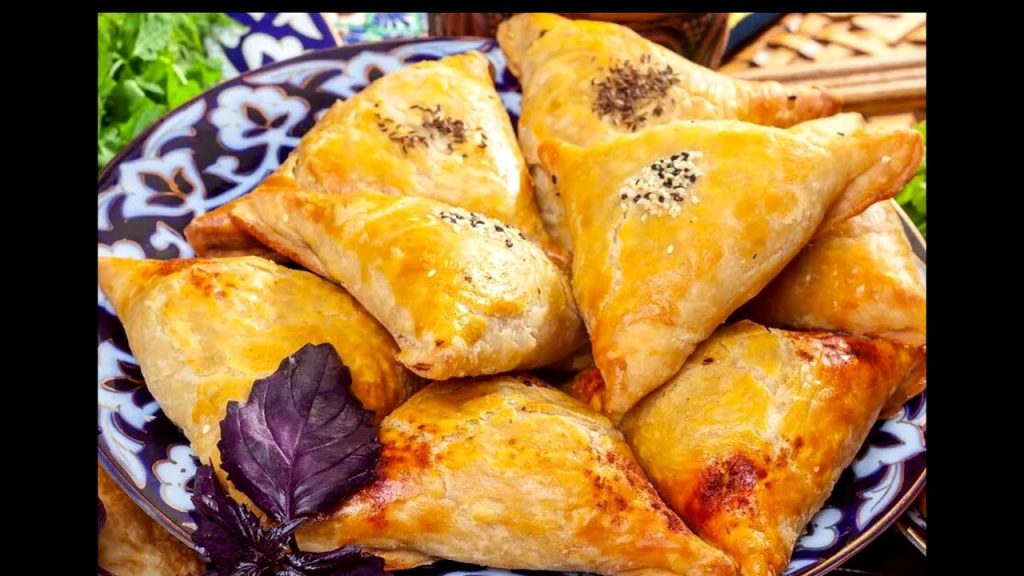
These are best served hot from the oven. Unlike with Indian samosas, the Uzbek samsa is baked in a tandoor, a large clay oven.
Popular Uzbek Desserts
Halva is a very popular sweet treat in Uzbekistan. It’s made from flour (wheat, rice or corn), butter and various seeds and nuts. Vanilla, chocolate, dried fruits, walnuts, pistachios, and other spices can be incorporated into a halva recipe. Cream or milk are often included in halva recipes and sometimes milky and chocolaty layers are swirled together.
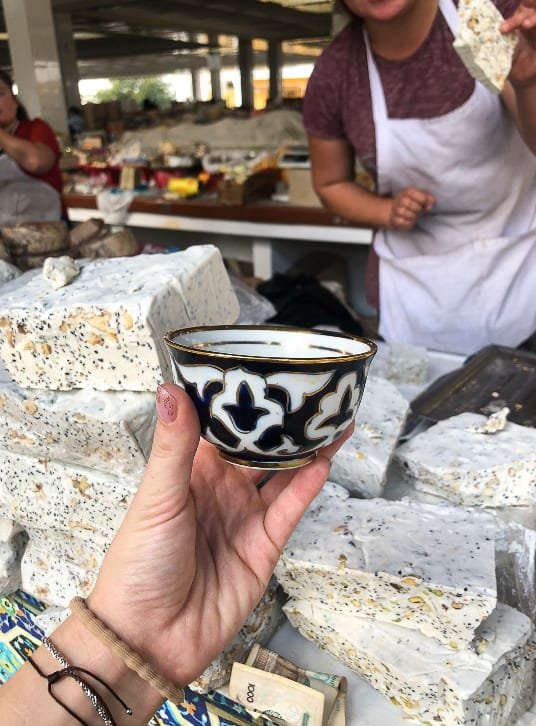
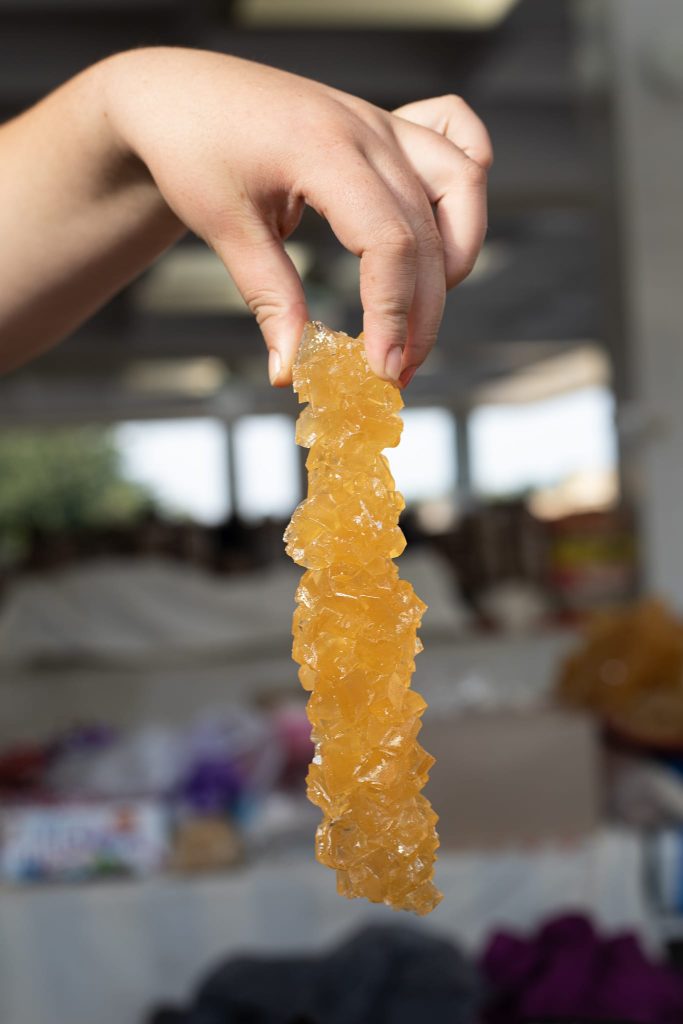
Another traditional Uzbek sweet treat is known as navat. Crystallized sugar is served with tea, combined with grape juice to make cough lozenges or swirled in green tea to sweeten it.
Uzbek cuisine does not have a wide range of dessert options and dried fruit or a fruit compote are the usual end to a festive dinner. After that, nuts, halva and green tea are typically enjoyed.
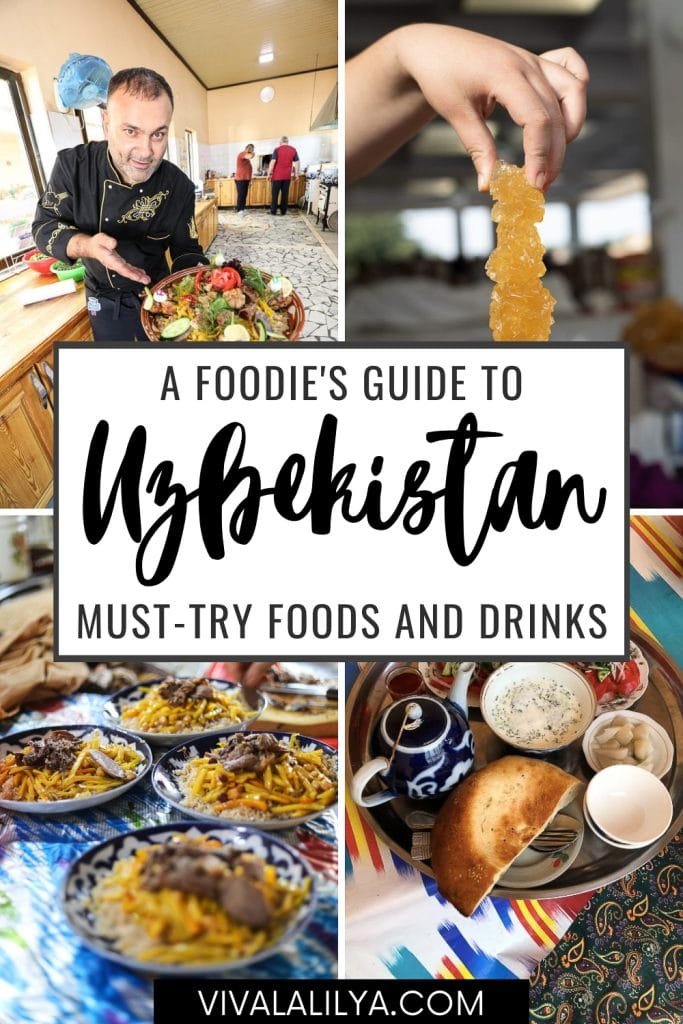
Talking of tea, this beverage is enjoyed all over the country, brewed according to various rules such as pouring the first bowlful back into the kettle and brewing it for an exact time. Mountain tea is also well loved as is green tea brewed with spices.




